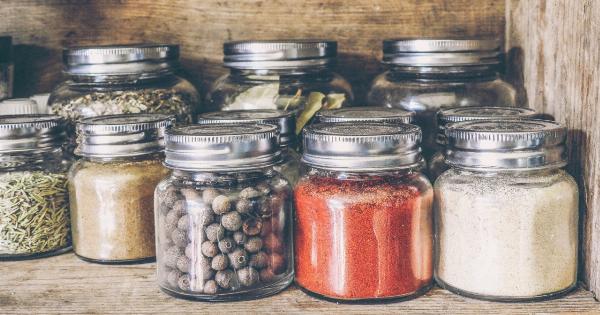We all love flavorful food. The right balance of flavors can turn a simple meal into a memorable culinary experience. However, many of us rely on salt to enhance the taste of our dishes.
While salt may add that instant burst of flavor, it’s important to note that excessive salt consumption can have serious health consequences.
High sodium intake has been linked to various health issues, including hypertension, heart disease, stroke, and kidney problems.
The American Heart Association recommends consuming no more than 2,300 milligrams of sodium per day, which is roughly equivalent to one teaspoon of salt. Unfortunately, the average American consumes almost double this amount.
Reducing your salt intake doesn’t mean compromising on taste. By incorporating a variety of flavorful spices and herbs into your cooking, you can create delicious dishes without relying heavily on salt.
In fact, using the right combinations of spices can enhance the overall flavor profile of your meals and open up a whole new world of culinary possibilities.
1. Garlic
Garlic is a staple in many cuisines around the world for its pungent and distinctive flavor. It not only adds depth to your dishes but also offers numerous health benefits.
Rich in antioxidants, garlic has been shown to help reduce cholesterol levels and boost the immune system. You can use fresh or powdered garlic in various recipes, such as stir-fries, marinades, and sauces.
2. Cumin
Cumin is an aromatic spice commonly used in Middle Eastern, Indian, and Mexican cuisines. Its warm and earthy flavor adds a delightful kick to savory dishes.
Cumin pairs well with roasted vegetables, grilled meats, and even in chickpea-based dishes like hummus. You can use whole cumin seeds or ground cumin powder to season your meals.
3. Turmeric
Turmeric is not only a vibrant orange spice but also a powerful anti-inflammatory. It has a mild, slightly bitter taste, but when used in the right proportions, it adds a beautiful color and depth of flavor to your food.
Turmeric is commonly used in curry dishes, lentil soups, and rice preparations. It can stain, so be careful when handling it.
4. Paprika
Paprika is a bright red spice made from ground sweet or hot chilies. It adds a mild, smoky flavor to your dishes and is often used to season meat, seafood, and vegetables. Paprika can be used to flavor stews, rubs, and marinades.
It is available in various heat levels, so choose accordingly based on your preference.
5. Cinnamon
Cinnamon is a warm and comforting spice commonly associated with sweet treats like apple pie and cinnamon rolls. However, it can also work wonders in savory dishes.
Adding a pinch of cinnamon to chili, stews, or even roasted vegetables can impart a subtle warmth and balance out the flavors.
6. Rosemary
Rosemary is an aromatic herb with a woody and pine-like fragrance. It pairs exceptionally well with roasted meats, potatoes, and root vegetables. You can use fresh rosemary sprigs or dried rosemary to infuse your dishes with a savory and earthy note.
Remember to remove the tough stems before adding it to your recipes.
7. Ginger
Ginger is known for its powerful and slightly spicy flavor. It adds a zing to both sweet and savory dishes. When used in savory recipes, like stir-fries or marinades, ginger provides a fresh and aromatic taste. In sweet dishes, it can add warmth and depth.
Fresh ginger root or ground ginger powder can be used based on your preference.
8. Oregano
Oregano is a staple herb in Mediterranean and Italian cuisines. It has a strong, slightly bitter flavor that works exceptionally well in tomato-based dishes, pasta sauces, and grilled vegetables.
Oregano pairs perfectly with other classic Italian flavors like garlic and basil. It is available in both fresh and dried forms, but the dried variety tends to have a more concentrated flavor.
9. Bay Leaves
Bay leaves are commonly used to add subtle but distinctive flavor to soups, stews, and braised dishes. These aromatic leaves infuse your recipes with a unique and almost floral taste.
Remember to remove the bay leaves before serving, as they can be quite tough and are not pleasant to eat.
10. Dill
Dill has a fresh and herbaceous flavor that pairs wonderfully with fish, seafood, and vegetables. It contributes a bright and slightly tangy taste to dishes. Fresh dill is particularly aromatic and can elevate the taste of dips, salads, and creamy sauces.
However, dried dill can also be used when fresh dill is not available.
By incorporating these flavorful spices and herbs into your cooking repertoire, you can reduce your salt intake without sacrificing taste.
Experiment with different combinations to find your preferred flavor profiles, and soon you’ll realize that the possibilities are endless when it comes to creating delicious and healthy meals!.





























